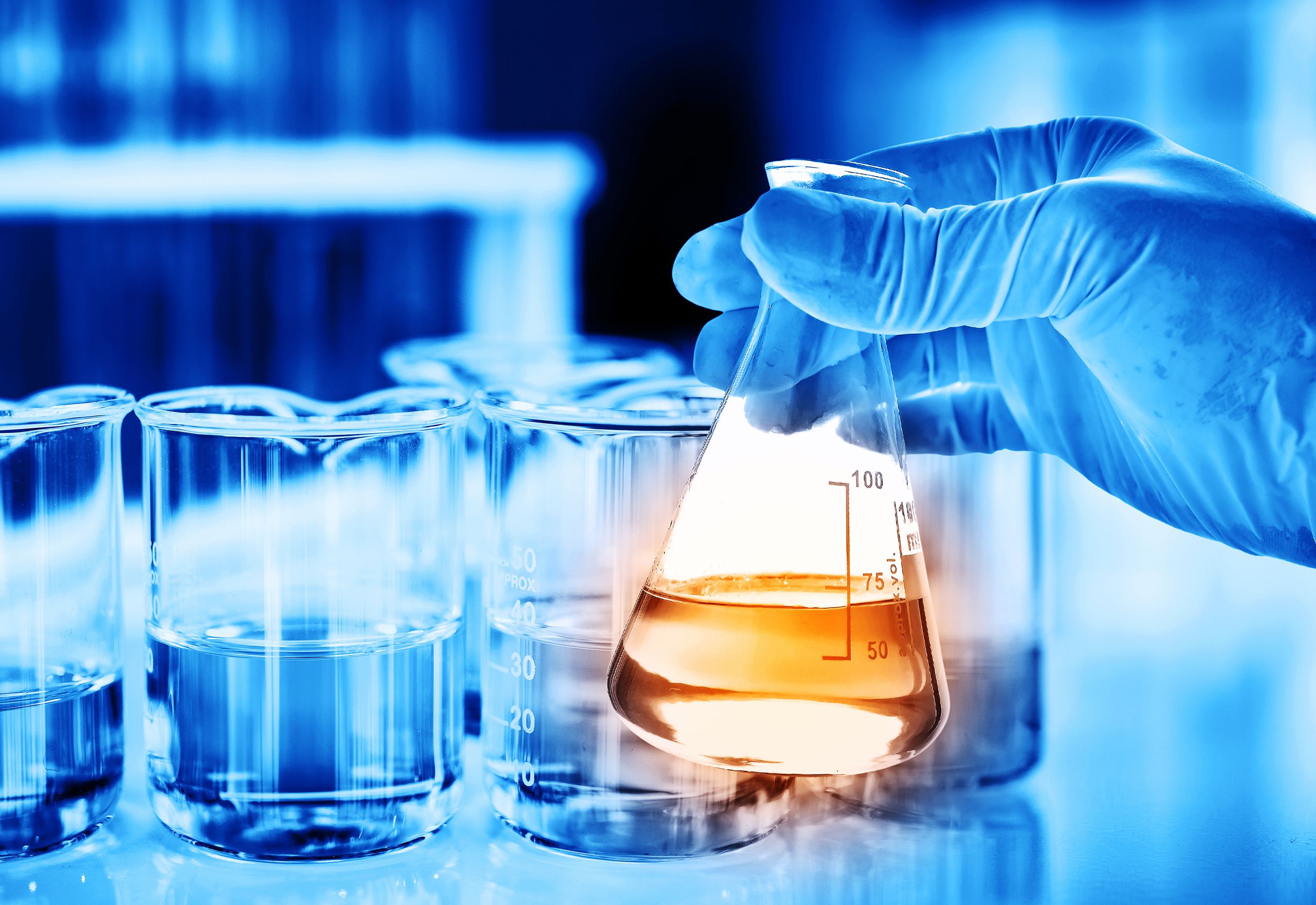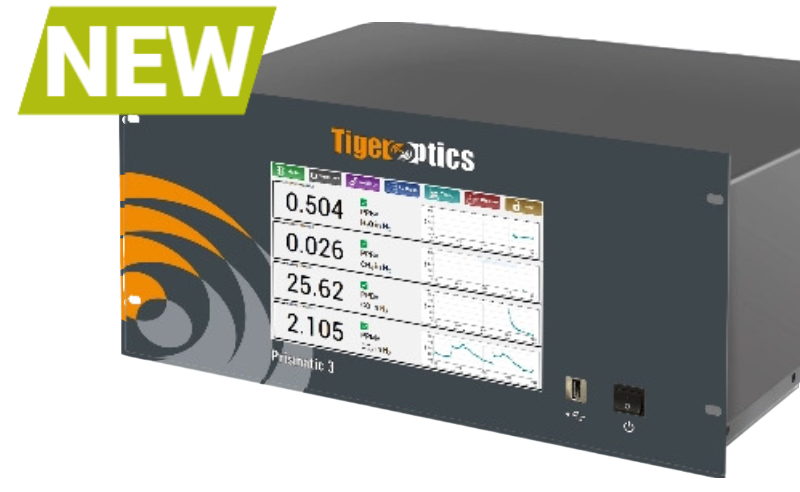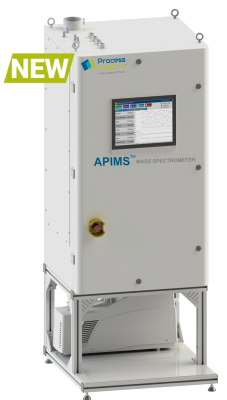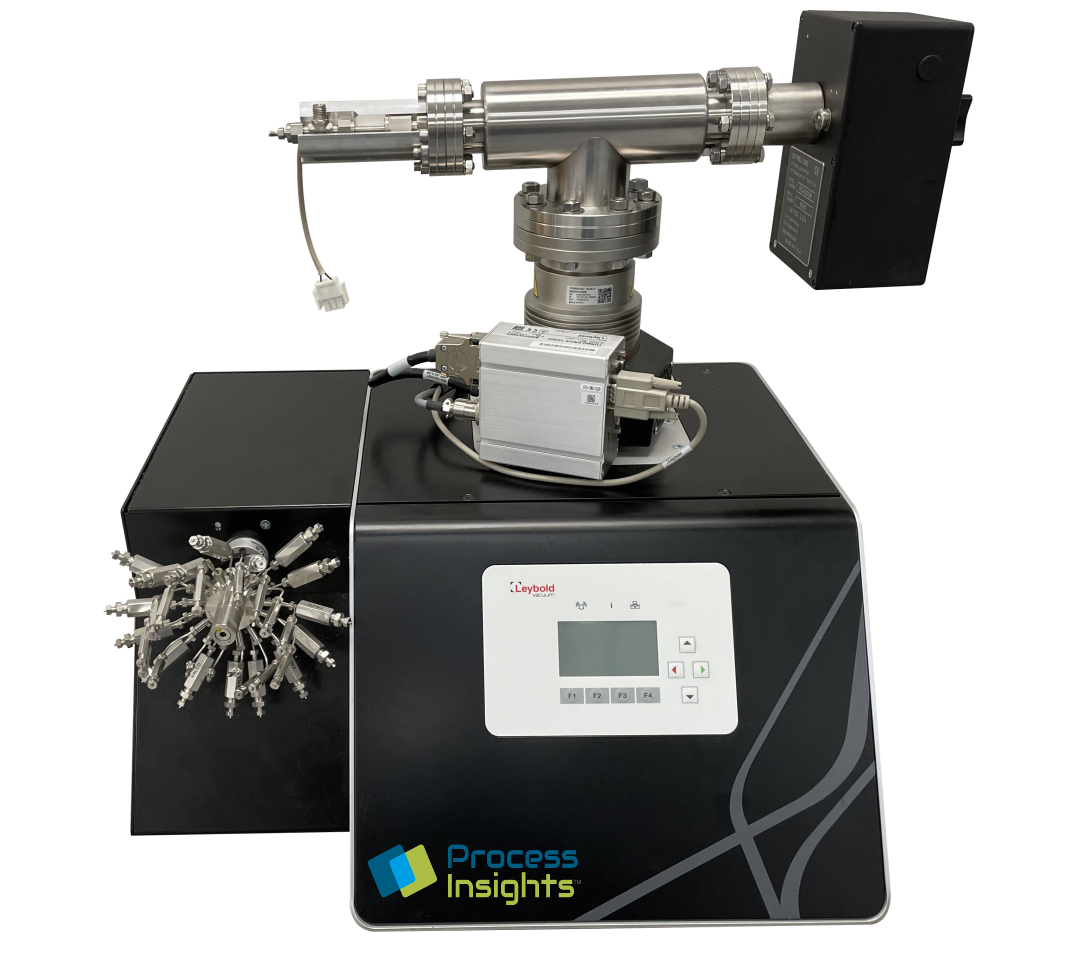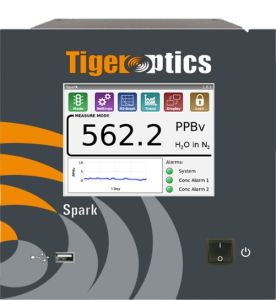Labs & Research
Solutions For Research & Lab APPLICATIONS
In laboratories and research facilities, the demand for cutting-edge analytical instrumentation has never been more critical. The COVID-19 pandemic and the continuous transformation in the research industries have intensified the need for fast, reliable, and high-performance analytical solutions. At our company, we provide state-of-the-art quadrupole mass spectrometers for qualitative and quantitative analysis, as well as CRDS gas analyzers for precise high purity measurements. With our advanced analytical technologies and solutions, laboratories can enhance process control, elevate product quality, improve reliability, and mitigate risks to personnel, plants, and the environment.
In today’s ever-changing research landscape, laboratories require advanced analytical solutions that cater to their evolving needs. Our company understands these demands and is committed to delivering fast, reliable, and high-performance instrumentation to support laboratories in their pursuit of scientific excellence. By leveraging our analytical technologies, laboratories can make informed process control adjustments, elevate product quality, enhance reliability, and reduce risks to personnel and the environment. Our solutions empower researchers to tackle the most challenging scientific questions and drive innovation in their respective fields.
We know your process and how critical it is for you to protect precious and limited resources.
WE’RE HERE FOR YOU
Get the most reliable, most precise gas analysis technologies available on the market today. We will work to match your needs and budget and provide the optimal, and most stable process analysis solution for your application.
Need help? No problem. We’re here to help. Contact us today.
PRISMATIC 3+ MULTI-SPECIES CRDS GAS ANALYZER
Introducing our NEW TIGER OPTICS™ Prismatic 3+™ –With detection limits as low as 3ppb, our Prismatic 3+ Cavity Ring-Down Spectroscopy (CRDS) analyzers will reduce downtime and save money on preventative maintenance that is typically required by other technologies. The Prismatic 3+ laser-based, multi-species analyzer offers up to 4 analytes (H2O, CO, CO2 & CH4), providing measurements in seconds without the need for periodic calibration. Our CRDS analyzers are simple to install and operate, perfect for unmanned applications.
APPLICATIONS
- Air Separation Units for Electronic Gases
- Truck Fill
- Pre-Purifier Bulk Gas Monitoring
- Unmanned Operations
- Gas Quality Control
- Hydrogen Fuel Cells
- Research & Development
EXTREL™ MAX300-TGM™
Real-Time Toxic Gas Monitoring Solution in Ambient Air
Our NEW EXTREL™ MAX300-TGM™ Toxic Gas Monitor is a real time monitoring solution with analysis speeds of 0.4 seconds per chemical and gas clearing times of less than 3 seconds. These impressive speeds exceed industry requirements for continuous monitoring. With the ability to analyze 15+ chemicals per sample point, the MAX300-TGM toxic gas analyzer provides maximum efficiency at an extremely low cost-per-chemical, per sample point.
MAX300-TGM Advantages Include:
- Versatile and flexible analyzer – detect multiple chemicals on up to 46 sample points
- Fast measurement with high sensitivity, reducing false alarms
- Highly responsive to changes in chemical concentration – reducing down time after an event
- Streamlined operation – centralized analyzer for full facility monitoring
- Low cost of ownership and streamlined operation – decreasing complexity in maintenance and upkeep
- Industry leading application expertise and technical support with decades of experience with ambient air monitoring
- Large, user-friendly touch screen interface for at-a-glance updates with customizable alarm verifications
Extrel™ VeraSpec™ APIMS
Semiconductor manufacturers need the ability to continuously verify the purity of process gases in real-time and detect trace contamination at concentrations in the low parts-per-trillion (ppt). Monitor a wide range of gases and gas mixtures with the stability that provides the long-term repeatability required in most applications.
Our NEW EXTREL™ VeraSpec™ Atmospheric Pressure Ionization Mass Spectrometer (APIMS) is designed for reliable and repeatable low parts-per-trillion detection limits for contamination control in Ultra-High Purity (UHP) gases used in semiconductor and other high-tech industrial applications.
VerSpec APIMS Benefits Include:
- Industry-best lower detection limits (LDLs) for bulk gas analysis
- Real-time, multi-species monitoring for ALL critical Impurities in bulk gases including trace O2, H2, H2O, CH4, CO, CO2, Xe and more
- Well-established, powerful mass spectrometry technology
- Unparalleled measurement range from PPT to 100% with unique dual-source ionization configuration
EXTREL MAX300-CAT™ Laboratory Mass Spectrometer
The MAX300-CAT™ Laboratory Mass Spectrometer is a fast, high-sensitivity, quantitative gas analyzer for catalysis, reaction monitoring, and environmental research. This powerful quadrupole system performs high precision quantitative analysis of every component in a gas or vapor mixture and can be equipped for the fully automated sampling of 61+ gas channels.
With the ability to track concentration changes from ppb levels to 100% and continuous data updates in seconds, the MAX300-CAT Laboratory Mass Spectrometer provides a compact, flexible platform optimized for gas reaction studies in catalysis, bioreactor control, process development, and environmental analysis.
TIGER OPTICS™ Spark™ CRDS Analyzer
Our TIGER OPTICS™ Spark™ H2O is fast, easy to start up and operate. For the first time, powerful advanced spectroscopy is available at a popular price for a host of applications, from quality assurance to cylinder filling, as well as welding, medical, industrial and high-purity gas production; bulk delivery and distribution transfer points; and more. Say goodbye to cumbersome, complex, costly and labor-intensive mid-20th century technology.
-

ACADEMIC & ADVANCED RESEARCH
Academic and advance research laboratories extensively utilize CRDS gas analyzers and quadrupole mass spectrometers for various scientific investigations and studies. These advanced analytical instruments offer unique capabilities that enable researchers to delve deeper into the composition, behavior, and interactions of gases.
Our TIGER OPTICS™ CRDS gas analyzers are commonly employed in atmospheric and environmental research to monitor trace gases and understand their impact on climate change, air quality, and ecosystem health. These analyzers provide highly sensitive and precise measurements of greenhouse gases, such as carbon dioxide, methane, and nitrous oxide, allowing researchers to track their concentrations and study their sources and sinks. Additionally, CRDS analyzers are utilized in the analysis of volatile organic compounds (VOCs), which play a significant role in air pollution and the formation of secondary pollutants like ozone.
Also our EXTREL™ quadrupole mass spectrometers, on the other hand, offer powerful capabilities for the analysis of complex gas mixtures. These instruments are widely used in academic and advanced research laboratories across multiple disciplines. They enable researchers to identify and quantify a wide range of gases and volatile compounds in various research areas, including environmental science, materials science, biochemistry, and pharmaceutical research. Quadrupole mass spectrometers provide high-resolution mass analysis, allowing for the identification of individual compounds based on their mass-to-charge ratio. They are often utilized in isotope ratio analysis, metabolomics, environmental forensics, and gas phase reaction studies.
Our ALPHA OMEGA INSTRUMENTS™ trace and percent oxygen analyzers and safety monitors are used in both academic and advance research laboratories extensively.
-

METROLOGY
We are a Swiss Accreditation Service ISO/IEC 17025 accredited laboratory (SCS 0125) for humidity and temperature calibration. The uncertainties of our calibration are amongst the lowest available, and we provide fast turnaround times for the calibration of any type of hygrometer or thermometer. We are also an accredited calibration laboratory (D-K-21411-01) for humidity and temperature accredited by the German Accreditation Body (DAkkS) according to DIN EN ISO/IEC 17025.
Our MBW™ chilled mirror hygrometers provide the calibration traceability for many laboratories such as humidity instrument manufacturers and National Metrology Institutes. Our chilled mirror hygrometers are considered the transfer standard for calibration traceability for many laboratories due to their high accuracy, reliability, and adherence to international standards.
As a Swiss Designated Institute (DI) for hygrometry, we have a responsibility for maintaining and improving the standards for humidity in Switzerland. To achieve this, we continually improve methods of calibration by implementing new techniques to extend our range of capability and improve our published CMC (Calibration and Measurement Capability). We have implemented Primary Realizations for low and high range humidity generation (based on temperature and pressure). This has resulted in CMCs that compare favorably with the leading National Metrology Institutes worldwide.
Our TIGER OPTICS™ Cavity Ring-Down Spectroscopy (CRDS) Technology is a standard bearer for a growing number of major research centers and national metrology institutes around the globe. Now our CRDS gas analyzers are in 22 national metrology institutes worldwide. They serve as transfer standards and for research into such issues as global warming and acid rain, and prized for their proven precision, excellent stability, rapid response, and dynamic range (four+ orders of magnitude).
- Humidity standards and generators, calibration transfer and reference standards, test method validation, and sensor calibration
- ppt – ppb – ppm levels of O2, H2O, HCl, CH4, NH3 and more
- Oxygen safety monitoring
-

ENVIRONMENT SAFETY & COMPLIANCE
Labs play a crucial role in environmental safety and compliance by providing analytical testing services and expertise to ensure that various environmental regulations are met. Our TIGER OPTICS™ Cavity Ring-Down Spectroscopy (CRDS) gas analyzers are commonly used in laboratories for environmental safety and compliance testing due to their high sensitivity and accuracy in measuring trace levels of gases in ambient air or in stack emissions. Here’s how our CRDS Gas Analyzers contribute to laboratory compliance:
- Detection and quantification of trace gases
- Real-time monitoring
- Accuracy and precision
- Compliance with regulatory standards
Our EXTREL™ Quadrupole Mass Spectrometers play a key role in laboratory compliance by providing precise and accurate analysis of gas samples, which is essential for meeting regulatory requirements and ensuring adherence to quality standards. Here’s how they contribute to laboratory compliance:
- Identification of pollutants and contaminants
- Quantification of target compounds
- Monitoring of emissions
- Process optimization and troubleshooting
- Method development and validation
- Traceability and documentation
-

FUEL & ENERGY
Fuel and Energy laboratories perform a variety of tests and analyses on various fuels and energy sources, such as oil, gas, coal, biofuels, and renewable energy sources. These laboratories play a critical role in ensuring that the fuels and energy sources used for various applications meet the required quality, safety, and regulatory standards.
Fuel and energy laboratories require powerful gas analyzers for several important reasons. Firstly, these laboratories deal with a wide range of fuels, gases, and energy sources, each with their unique composition and characteristics. Accurate and reliable gas analysis is crucial for determining the quality, efficiency, and environmental impact of these energy sources. Powerful gas analyzers provide precise measurements of various gas components, including hydrocarbons, oxygen, carbon dioxide, nitrogen, and trace impurities, enabling comprehensive analysis and ensuring compliance with industry standards and regulations.
Our EXTREL™ MAX300-LG™ Laboratory Mass Spectrometer has the ability to continuously measure the known components, as well as the unknowns, is what makes the MAX300-LG the ideal analyzer for fuel cell research. This laboratory mass spectrometer provides the sensitivity and detection limits needed for these types of reactions, especially for hydrogen measurements.
Our TIGER OPTICS™ CRDS gas analyzer, Prismatic™ 3, is ideally suited for fuel-cell hydrogen purity monitoring throughout the entire hydrogen supply chain—from production to transportation and storage to the fueling station. This compact CRDS gas analyzer offers simultaneous detection of H2O, CO, CO2 and CH4 from parts-per-billion to parts-per-million levels to ensure purity requirements in line with SAE J2719 and ISO 14687:2019.
Benzene is a naturally occurring compound in crude oil and a very useful chemical solvent and feedstock. Unfortunately, it can be a significant health risk and is therefore environmentally regulated in many common products especially gasoline. Thus, strict limits are put on the concentration and accurate measurements are required. The traditional analytical method for measuring benzene is gas chromatography (GC), which is time and labor intensive. Using our GUIDED WAVE™ fiber optic-based, Near-Infrared (NIR) spectroscopy in real-time can save time and money to traditional methods.
Measuring the Saybolt or ASTM color online is a key parameter in many light hydrocarbon mixes for quality control to detect this carryover. Monitoring the color allows the refiner to verify that the product is within specification. Any “out of spec” product can be reprocessed before being sold. Our Saybolt Color ClearView db Photometer can be equipped with a standard 50mm pathlength cell. Both Saybolt and ASTM color can be measured online in real-time.
-

HELIUM SCATTERING
One technique used to characterize the physical and electronic properties of the surface of a material is Helium Scattering using mass spectrometry. A beam of atoms, usually Helium, is aimed at a surface, and atoms from the surface are ejected. Mass Filters are used to measure the atoms that are scattered, and to pinpoint the angle and time at which the scattering atoms are being released (time of flight analysis).
Since the events of this non-destructive surface science method happen quickly, this application requires the use of mass filters that provide high stability and fast response times. Our EXTREL™ Quadrupole Mass Filters and RF/DC Power Supplies are the ideal choice for Scattering applications.
-

LASER ABLATION
Materials that are analyzed using the Laser Ablation application include those among the following industries: Semiconductor, Aerospace, Nanomaterials, Biomedical, and Nuclear. To perform surface analysis, surface cleaning, and the removal and redistribution of specific materials, deposition and Carbon Nanotube production, researchers rely on the application of Laser Ablation. Laboratory scientists depend on our EXTREL™ MAX System Mass Spectrometers for most of these applications. Coupled with high performance and high speed, these detection systems also provide high sensitivity and high abundance sensitivity to monitor low level components in a high background.
We also offer Plasma Analysis/Molecular Beam Systems that gives it the ability to monitor higher pressure applications. Various mass range options allow the user to measure all parameters necessary, from measurements of atomic hydrogen levels to Carbon Nanotubes.
-

MATERIALS & CATALYSIS RESEARCH
Materials and catalysis improve the properties of materials through computational design, experimental characterization, and synthetic approaches, and industrial processes.
Our EXTREL™ quadrupole mass spec solutions offer:
- Laboratory Gas Analysis
- Temperature Programmed Desorption
- Cluster Size Selection & Deposition
- Molecular Beam Sampling
-

OUTGASSING STUDIES
Analysts use Outgassing Studies to determine the chemical and physical properties of materials that are under various temperature and pressure conditions. Outgassing research analyzes materials used in the production of aerospace and semiconductor devices. This application is also well-suited to analyze devices such as medical/surgical equipment, automotive parts and high precision ceramics, where high quality results are critical for successful research studies.
To perform Outgassing Studies, Mass Spectrometers that provide high sensitivity and high resolution are needed. Our EXTREL™ MAX-QMS™ Spectrometer System meets these needs. Along with high sensitivity up to 6 mA/Torr, the MAX-QMS System gives users the ability to measure both water and other possible contaminants. The Merlin Automation™ Data System provides the user with the ability to monitor outgassing during a short experiment, continuously for days or even weeks.
Here’s how our EXTREL quadrupole mass spectrometer can be employed in outgassing studies:
- Identification of outgassing species
- Detection of trace contaminants
- Real-time monitoring
- Process optimization
-

SECONDARY ION MASS SPECTROMETRY
Secondary Ion Mass Spectrometry (SIMS) is used to detect and characterize trace elements at or near the surface of a solid or thin film allowing researchers to understand the chemical composition of the surface.
This surface science technique requires the use of systems with very high sensitivity and the ability to perform high resolution energy analysis. SIMS is useful for a wide variety of surface analysis. For example, SIMS can be used to detect and analyze contaminants on a surface, analyze materials and devices to ensure the quality of specific products, and study atomic scale defects that may occur in the manufacturing of semiconductor chips or other materials.
-

STERILIZATION
Sterilant gas is commonly used in laboratories to sterilize equipment and surfaces. The most commonly used sterilant gases are ethylene oxide (EtO) and hydrogen peroxide gas plasma. Labs and research facilities often utilize sterilant gases for various critical purposes, making their use essential. Sterilant gases, such as ethylene oxide (EtO) or hydrogen peroxide vapor, are highly effective in eliminating microbial contamination and ensuring the sterility of equipment, surfaces, and sensitive materials. These gases are particularly valuable in environments where traditional sterilization methods, such as heat or steam, may damage or compromise the integrity of the items being sterilized.
Sterilant gases offer several advantages in laboratory settings. Firstly, they penetrate hard-to-reach areas and intricate equipment, ensuring thorough sterilization even in complex instruments or devices with intricate designs. This capability is crucial in research facilities where precision instruments, biological samples, or medical devices require absolute sterility to maintain the integrity of experiments or avoid cross-contamination.
Secondly, sterilant gases provide a gentle and non-destructive sterilization method, making them suitable for delicate materials and heat-sensitive items. Unlike heat-based sterilization methods, sterilant gases can effectively disinfect temperature-sensitive substances, such as certain plastics, electronics, or biological materials, without causing damage or degradation.
Lastly, sterilant gases offer convenience and flexibility in laboratory operations. They can be applied in enclosed chambers or through specialized equipment, allowing for controlled and precise sterilization processes. This adaptability makes sterilant gases a versatile choice for a wide range of laboratory applications, including medical research, biotechnology, pharmaceutical production, and microbiology.
Our GUIDED WAVE™ ClearView db® Hydrogen Peroxide Vapor Analyzers can be used in sterilization and virus deactivation processes to monitor the concentration of hydrogen peroxide vapor, which is commonly used as a disinfectant.
-

TEMPERATURE PROGRAMMED DESORPTION
Thermogravimetric analysis (TGA) is a powerful approach to the study of the thermal behavior of solid and liquid samples. The interface of TGA with a quadrupole mass spectrometer allows the researcher to characterize and quantify the compounds in the off-gas in real-time along with each mass loss.
The EXTREL™MAX300-EGA™ Evolved Gas Analyzer comes equipped to import a Start-of-Heating signal from the TGA for easy data synchronization and features a chemically inert transfer line specially designed keep the sample hot and under vacuum all the way to the ionizer, to guard against condensation or chemical interaction.
-

PURE & ULTRA-PURE WATER
Ultra-pure water (UPW) is water that has been purified to high levels of specification. Ultra-pure water is essential to every laboratory. UPW must not contain any detectable endotoxins. This level of purity makes it a perfect reagent for laboratory work. UPW is used in the semiconductor and pharmaceutical industries. The quality of water is defined through a series of measurements of conductivity (µS/cm) or resistivity (MΩ-cm), Total Organic Carbon (TOC) in parts per billion (ppb), and bacterial count (CFU/ml).
Ultra-pure water is essential in lab and research facilities. In many scientific experiments, even trace impurities in water can significantly affect the accuracy and reliability of results. Ultra-pure water ensures that the water used as a solvent or reagent does not introduce contaminants that could interfere with the experimental outcomes.
Impurities in water, such as dissolved ions, organic compounds, and microorganisms, can interfere with the reactions and interactions being studied in the lab. Ultra-pure water minimizes such interference, allowing researchers to focus on the specific variables they are investigating.
Our LAR™ QuickTOCtrace™ ultra-pure water analyzer for TOC analysis in laboratory ultra-pure water include:
- Sensitivity
- Reliable and accurate measurements
- Real-time monitoring:
- User-friendly operation
- Compliance with industry standards
-

WASTEWATER
In labs and research facilities, monitoring wastewater is essential for several reasons. Firstly, laboratories often handle various chemicals, reagents, and biological materials that can potentially contaminate wastewater. Monitoring the wastewater allows facilities to ensure compliance with environmental regulations and prevent the release of harmful substances into the environment. By monitoring wastewater, labs can detect and address any deviations from acceptable levels of pollutants, ensuring responsible and sustainable waste management practices.
Our LAR™ QuickTOCultra™ TOC water quality analyzer offers several advantages for TOC analysis in laboratory wastewater:
- Sensitivity
- Wide dynamic range
- Speed and efficiency
- Robustness and reliability
